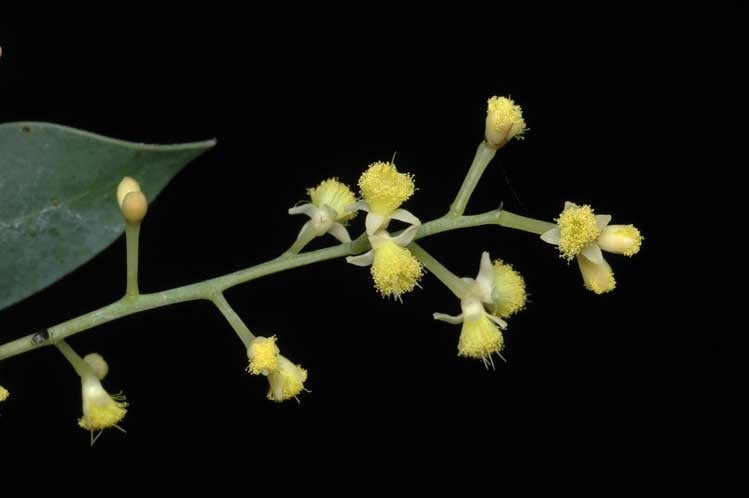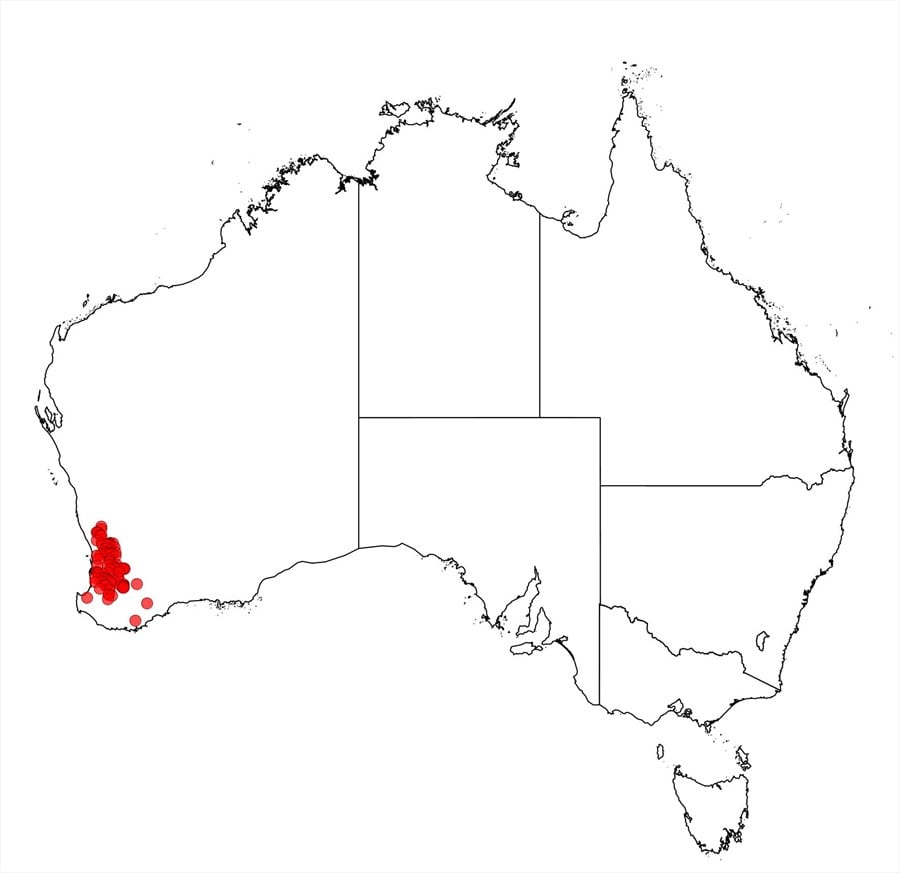Acacia celastrifolia Benth.
WATTLE
Acacias of Australia
Common Name
Glowing Wattle, Celastrus-leaved Acacia
Family
Fabaceae
Distribution
Occurs from N of New Norcia to York, S to Wagin and S of Dinninup, south-western W.A.
Description
Glabrous shrub 1–3 m high. Branchlets finely ribbed, pruinose. Phyllodes obovate to oblanceolate or elliptic, 3–7 cm long, 1.5–3.5 cm wide, l:w = 1.5–3.5, slightly undulate, obtuse-mucronate or acute, with indurate mucro, coriaceous, green to grey-green or subglaucous; midrib and marginal nerves prominent and yellow; lateral nerves few and obscure; gland prominent, (0.2–) 0.5–2 cm above pulvinus. Inflorescences 10–20-headed racemes; raceme axes normally 3–12 cm long; peduncles 3–10 mm long, somewhat stout; heads globular, normally 2–3-flowered, usually bright light golden. Flowers 4-merous, large; sepals united into a truncate to sinuously lobed calyx; ovaries 3–5 per flower, sessile, glabrous. Pods erect, linear, ±straight to shallowly curved, to 12 cm long, 3–4 mm wide, crustaceous to subwoody; margins thickened, undulate. Seeds longitudinal, oblong, narrowly 4–5 mm long, somewhat glossy, normally brown; aril terminal.
Habitat
Grows on laterite hills, in Eucalyptus (commonly E. accedens) woodland.
Specimens
W.A.: W boundary of proposed North Dinninup Reserve, E.M.Bennett 2063 (PERTH); 10 km N of New Norcia, H.Demarz 9630 (PERTH); Swan R., J.Drummond 281 (BM, G-DC, K, LE, MEL, OXF, P, W); 6.4 km W of York on the road to Perth, B.R.Maslin 485 (NSW, PERTH); 2 km N of Wagin on Great Southern Hwy, B.R.Maslin 5043 (PERTH).
Notes
A member of the ‘A. myrtifolia group’ which in the past was commonly treated as a variety of, or conspecific with, A. myrtifolia. Besides having a more southerly, coastal distribution, A. myrtifolia has non-pruinose branchlets, different phyllode proportions and a single ovary per flower. The multiple gynoecia of A. celastrifolia are especially distinctive; this condition is rare in Australian acacias. Also closely related to A. clydonophora.
Very attractive when in flower. The racemes are prolific at the ends of the branchlets and support numerous, fragrant, few-flowered heads of a bright light golden or sometimes sulphur colour.
FOA Reference
Data derived from Flora of Australia Volumes 11A (2001), 11B (2001) and 12 (1998), products of ABRS, ©Commonwealth of Australia
Author
B.R.Maslin
Minor edits by B.R.Maslin & J.Rogers
This identification key and fact sheets are available as a mobile application:
URL: https://apps.lucidcentral.org/wattle/
© Copyright 2018. All rights reserved.













